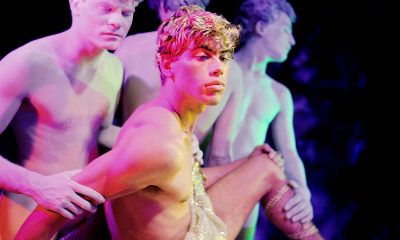a&e features
Getting to know new Washington Bach Consort conductor Dana Marsh
Organist/singer/conductor brings period music expertise to Washington ensemble
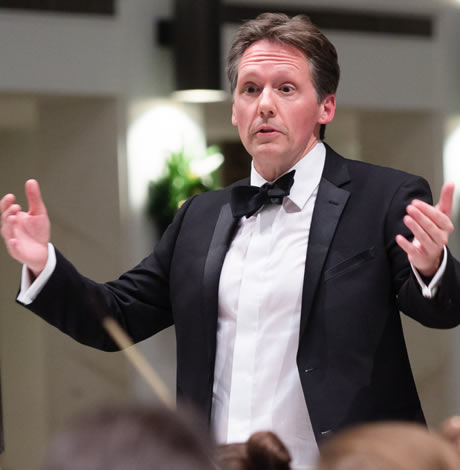
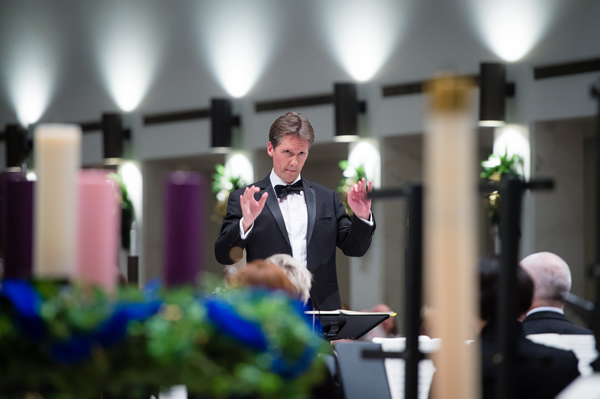
Dana Marsh says he developed an affinity for classical music at an early age. (Photo by David Betts; courtesy Metropolitan Photography)
To say the Washington Bach Consort was sent reeling with the June 2016 death of its founder J. Reilly Lewis is an understatement.
Lewis founded the Consort in 1977 dedicated to the music of Johann Sebastian Bach — arguably the most towering figure in the history of western music — and his contemporaries. Its board opted to use its 2017-2018 40th season as a lengthy audition process for a new artistic director. Dana Marsh, an Eastman-trained singer/conductor/organist, has secured the position and will open the 41st season on Sunday, Sept. 16 with “Handel & Bach: Sing a New Song” at National Presbyterian Church (4101 Nebraska Ave., N.W.; details at bachconsort.org).
Marsh received “very enthusiastic support” from Consort musicians, Charles Reifel, head of the group’s artistic committee and a Consort board member, said in a press release. “We feel very fortunate to have found him.”
He holds a master’s and doctoral degree in historical musicology from the University of Oxford and has been hailed by the Los Angeles Times as an “energetic and persuasive conductor” and dubbed a “powerful and expressive countertenor” by the New York Times. He taught early music history at Oxford and Cambridge universities.
Marsh, 53 and gay, is starting his fifth year as associate professor of music and director of the Historical Performance Institute at the Indiana University Jacobs School of Music. He’ll continue there and commute to Washington to lead the Consort. Marsh spoke to the Blade by phone last week from his Indiana office. His comments have been slightly edited for length.
WASHINGTON BLADE: It sounds like your work at the Historical Performance Institute will dovetail with the Consort’s mission. True?
DANA MARSH: Yes, there’s a great deal of overlap. What I do at Indiana University is considered historical performance where we use period instruments that are different from the versions used in modern orchestras that have been updated hugely. We try to do a bit of period drama and I direct at department at Indiana University that deals with that and the Washington Bach Consort also performs with period instruments.
BLADE: I was reading some liner notes recently that said something to the effect of what was actually likely heard in Bach’s churches at the time is not something we would find pleasant today. Is that true?
MARSH: There may be some truth to that speculation, that it would have sounded very out of tune to our ears. That could be the case but probably isn’t at least as far as the tuning goes. The performance practice itself, the way they made music and expressed text, some of that might have come as a shock to us, but when we start from the first temperament that we know of, they were very strict temperaments and they were probably more in tune than modern equal temperament because there weren’t as many key areas emphasized so it actually means it was very, very in tune.
BLADE: What is the appeal of period instrumentation for you?
MARSH: The idea of all this isn’t to tell people not to play Bach on modern instruments. There are lots of people who play on modern instruments who understand the detail and nuances (of early music) quite well. You can on modern instruments come extremely close to creating the same types of historical effects musically speaking that you can on earlier instruments. … One thing you certainly wouldn’t want to do is play lots of late 18th or 19th century music on tunings that were devised for the early 17th century. We’d think everyone was playing out of tune or incompetent. It has to fit the music it goes with.
BLADE: How did you develop an affinity for historically informed performance?
MARSH: I think it has to do with my really early musical training. Early on in life, when I was a choir boy both in New York and in England, first at the St. Thomas Choir School then at Salisbury Cathedral in England, a lot of the music (we performed) tended to be from the 15th and 16th centuries, so I felt a super strong affinity for those styles. I had a passion to find out in much more detail all I could about early music.
BLADE: Since you encountered it at a young age, is there a nostalgia factor for you with that music the way the Beatles and Motown and stuff like that has for the more general population?
MARSH: Yes, I would say so. I think whatever music we listen to, we tend to associate it with particular times in our lives, an experience, a smell or any sensory type of thing and you know, that automatically speaks to us from the inside in a certain way but there’s an intellectual fascination as well and that can be a great part of it too.
BLADE: Was your family musical?
MARSH: Yes, my dad was first violinist at the time for a well-known string quartet and he was on the road doing 50-60 concerts a year. My mom was an elementary school music teacher so there was no escape. … It was in my blood stream from a very early age.
BLADE: What’s life like in Bloomington, Indiana?
MARSH: Bloomington is an awesome town, right here in the middle of Indiana, this bastion of redness that’s very conservative but Bloomington has always been more liberal even going back to the 1950s. … It’s also aesthetically beautiful and there’s lots going on in the arts. There are over a thousand concerts a year associated with the school of music and seven operas done on a professional scale each year. It’s a surprisingly progressive and culturally rich town.
BLADE: How are you going to manage flying back and forth logistically?
MARSH: I checked into those concerns before I applied. The flights from Indiana to Reagan are incredibly efficient. I can leave my house by 6 a.m. and be on the Metro by 9:30. I’ll be in D.C. about half of September and more throughout the fall of course. Many of my colleagues have very full performing careers and are on the road so as long as one can shuffle everything around, the students and the school are totally behind it. It helps maintain their reputation.
BLADE: It sounds like a lot. Are you concerned you might spread yourself too thin?
MARSH: That’s always a possibility but for me things like that are sometimes almost counterintuitive. I find the more I’m in one situation, the more likely I am to get in a rut. If there’s something stimulating happening in the other situation, it helps me stay engaged (in my main work). It energizes me.
BLADE: What do you do at I.U.?
MARSH: I conduct and teach. I sort of have to wear a lot of hats from administrative functions to teaching to performance and then I also coach individual vocalists on performance style and conduct our early music ensembles. We have a bit of a rotation among faculty and with my administrative job, there are two entities. At the Historical Performance Institute is the musical research side of things and then the Historical Performance Department, which is the educational institute, that’s where the school of music deals with the students and faculty and everything that involves.
BLADE: I imagine you had been familiar with the Washington Bach Consort prior to hearing of the position?
MARSH: Absolutely. In fact, a few friends of mine who are professional singers had sung solos for Reilly in the past.
BLADE: Would you say the Consort has an international reputation?
MARSH: I would definitely say national, maybe not so much international and that’s one of the things we want to work on and will be an essential part of our new strategic plan.
BLADE: What is the Consort’s annual operating budget?
MARSH: I believe it’s about $1 million.
BLADE: Bach’s music is so heavily steeped in Christianity. Are you a Christian and do you feel Christians, people of other faiths and atheists can savor Bach equally or does his music tend to have added resonance for Christians?
MARSH: I was brought up in the church and Christianity though from a spiritual standpoint, I would say my horizons have broadened a bit and I would categorize my beliefs in that way now. There’s a lot of great art that came out of Christianity. When you think of all the people designing stained glass or building cathedrals, there had to have been skeptics among them and yet anyone can look at that art and be entirely struck by it. … I don’t think you have to be a believer to fully grasp what the composer means. … There are atheists who write about theology and are fascinated by it. … You can be an atheist and be absolutely struck by, say Bach’s “Mass in B Minor.”
BLADE: How religious does the elite classical music performance world tend to be in your experience?
MARSH: Certainly that community is well represented but I wouldn’t say it’s a majority. I would say it’s more like a long continuum and you have people whose beliefs would overlap with some of the places we perform like the National Cathedral or other outstanding church programs in the D.C. area, but also go exceptionally far beyond that as well.
BLADE: Is Bach really considered early music?
MARSH: The term early music has been something of a moving target. It used to be considered anything before 1750 with the emphasis on medieval and renaissance music but it kept moving forward and now it can be anything up to the end of the 19th century but it’s more about understanding the instruments they had at their disposal and how musical values have changed over time.
BLADE: When did you find out you got the job?
MARSH: I got the news in the middle of May but it wasn’t announced ’til August. I think the board wanted to get as much mileage out of the announcement as they could.
BLADE: What do you have planned for the opening concert?
MARSH: It will be very celebratory. We’re doing one of the Bach cantatas (BWV 190). The translation is “Sing Unto the Lord a New Song.” The second piece is by Handel and it’s his ode to St. Cecilia, the patron saint of musicians, a wonderfully rich piece. Then the final piece will be the Bach “Magnificat,” which is probably the best known of the three.
BLADE: How many singers and players are in the Consort?
MARSH: There are three formats: the subscription series at the National Presbyterian; the cantata series (six per year) at Church of the Epiphany and St Peter’s Capitol Hill; and the chamber series is held at the First Congregational FCC at 10th and G Streets. For the subscription series, where we do the larger-scale performances, there’s a choir of 16 and an orchestra of maybe 30 players. For the chamber series, it’s much smaller.
BLADE: So Bach wasn’t working with huge choirs and orchestras then in his day?
MARSH: No. He was always complaining to the town council about it. Sometimes he had just eight singers and proportional orchestras with single instruments except for the two violin parts.
BLADE: Did you ever meet Dr. Lewis?
MARSH: No, I never did but … I feel I met him in a way through his incredible legacy. (The Consort members) are really very nice and care about each other and that’s not always the case in organizations such as these.
BLADE: Do you still play the organ? (Marsh’s undergraduate major was organ performance)
MARSH: I do but not as much as I did. The first four years I was back in the U.S., I played at the Episcopal Cathedral in Indianapolis but since I’ve been at I.U. I haven’t been playing as much. I have some recitals scheduled next year. I’ll be doing one in New York in March and I’ll be playing on some noon recitals as well. There’s always an organ prelude with the cantatas so I’ll be doing a few of those. I’m definitely keeping the fingers moving.
BLADE: Would you say you’re a conductor first and foremost?
MARSH: At the moment, I’m doing more conducting than singing or playing. I’m doing the least amount of singing but sometimes, truth be told, I miss it.
BLADE: What’s it like conducting a choir of professional singers? Do you have to remind them of cutoffs and do they go flat and all the stuff that comes up in church volunteer choir or not so much?
MARSH: A lot of the same issues come up but in a different way. … You end up going more deeply into the details metaphorically of how you want to achieve certain effects but in a way that everyone can relate to. It’s important to identify as quickly as possible some common principles that can apply to as many people as possible that require the least amount of adjustment as possible for the biggest possible change or results.
BLADE: (Concert organist) Cameron Carpenter said at a recital I was at a few months ago that Bach was not someone anybody today would want to be around. I’m paraphrasing, but he basically said Bach was someone you’d avoid if you saw him on the Metro, a fundamentalist religious zealot. Do you agree?
MARSH: By today’s standards he probably would be considered a religious zealot but those kinds of things change over time. For his day, he might have been very middle of the road. I wouldn’t argue with what Cameron said and yeah, there’s definitely documentary evidence that he could be extremely cantankerous but it tended to be with the authorities because he felt he was under supported. The guy had a family of nearly two dozen kids and was responsible for all the music in the town so I’m sure there was a lot of pressure. … I’m sure he had a gentler side as well but only a time machine would tell us that.
BLADE: LGBT issues seem kind of murky in classical music. On one hand, it’s treated as a non-issue as long as your performance is solid. On the other hand it can be so staid that the downplaying of one’s sexuality on the stage can feel disingenuous in its own right. What’s your take on all that?
MARSH: There does tend to be a way of casting aside certain social issues in deference to the music. There’s been a great deal more written in the last 40 years about how some of the great composers might have been gay. There has been a whole branch of musicology devoted to this. Philip Brett, one of the founders of that scholarship, was a mentor of mine. His edited book of 25 years ago, “Queering the Pitch: the new Gay and Lesbian Musicology,” made the first strides in this area. Handel, Schubert and Tchaikovsky, among others, are figures for whom a good deal of scholarly research has been undertaken with consensus pointing toward their being gay. A great deal more ground has been covered since. And now the whole idea of non-binary gender issues opens wider horizons as well so it’s not an either-or thing, it’s one of those long continuums that people can be situated at many different places along it. We’re seeing more trans singers now and one I know, a student at I.U., is absolutely one of the best I’ve ever heard and has an incredibly bright future ahead. I think we can all be kind of surprised by the discoveries we’ll continue to make in this area and how relevant they truly can be.
BLADE: How does it help us today to know that?
MARSH: Although attitudes toward sexuality have changed substantially over time during different centuries, same-sex attraction is something that can’t be whitewashed away from history. Of course, most of the evidence that survives has to be documentary, or iconographic, and can only capture so much of a layer of social behavior that is ultimately ephemeral.
BLADE: How long have you been out professionally?
MARSH: I was kind of late. I didn’t come out ’til I was in my 30s. I had been open to some friends sooner. I almost got married to a woman once … and I identified as a little more bisexual at the time I guess. I don’t really know how to put that. But now that I look back, I think things worked out as they should have.
BLADE: Did coming out have any impact on your musical career?
MARSH: Not in the least. Nobody batted an eyelash really.
BLADE: Are you in a relationship now?
MARSH: Yes, he moved in with me last December. He’s in an entirely different field and I find that refreshing. He’s the most special person I’ve ever met and I just feel lucky every day.
BLADE: How long have you been together?
MARSH: We first started hanging out four years ago.
BLADE: What’s your vision for the Consort?
MARSH: Kind of circling back to what we were saying about raising its profile on an international basis but also continuing, through recordings and tours, to do outreach work. We see about 3,000 students a year in a project called Bach to School. That is important since music education has been so heavily written out of schools. We have a real job to do in helping expose these kids to music.
BLADE: Sometimes it feels like society is getting overall kind of dumbed down. I could point to many challenges various classical music organizations are facing. Does finding an audience and continuing to perform feel like an uphill battle?
MARSH: No, not at all. I think performing musicians have always had to balance these forces of creative autonomy with economic reality. That’s been a challenge going back 300 years. Being able to balance those and find ways to deal with them entrepreneurally betters the art for everyone.
BLADE: But is there a danger in spending time thinking like an entrepreneur and spending time doing outreach in schools and so on, that the music itself may suffer?
MARSH: Not at all. I think over the long haul it has the opposite effect. A lot of the obstacles we’re facing now deal with perspectives that have already had their time so maybe now it’s time to create new ones. This whole idea that you go to a concert and have a very passive audience that is shushed … these are conventions we’ve created in the last century that weren’t around before and we’ve clung to them and they’ve created some of our biggest challenges today. But there are organizations that manage to keep tradition and overcome these challenges like the L.A. Philharmonic or the Handel and Haydn Society or the Bach Consort. … There are opportunities there when you start thinking far outside the box.
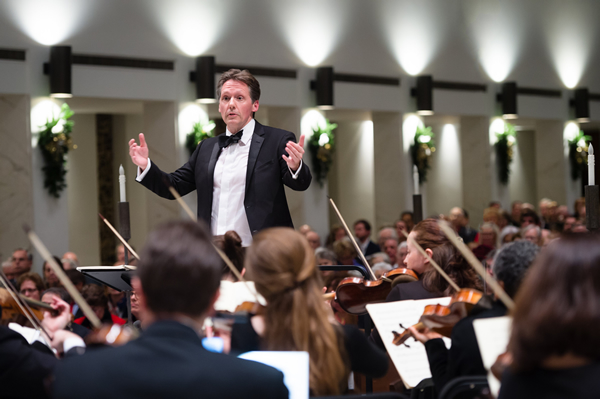
Dana Marsh says challenges in classical music often stem from an over-reliance on outdated concert practices. (Photo by David Betts; courtesy Metropolitan Photography)
a&e features
From Prohibition to Pride: Queering the District podcast reveals local LGBTQ history
The new podcast explores the hidden history and enduring impact of queer spaces in Washington, D.C.
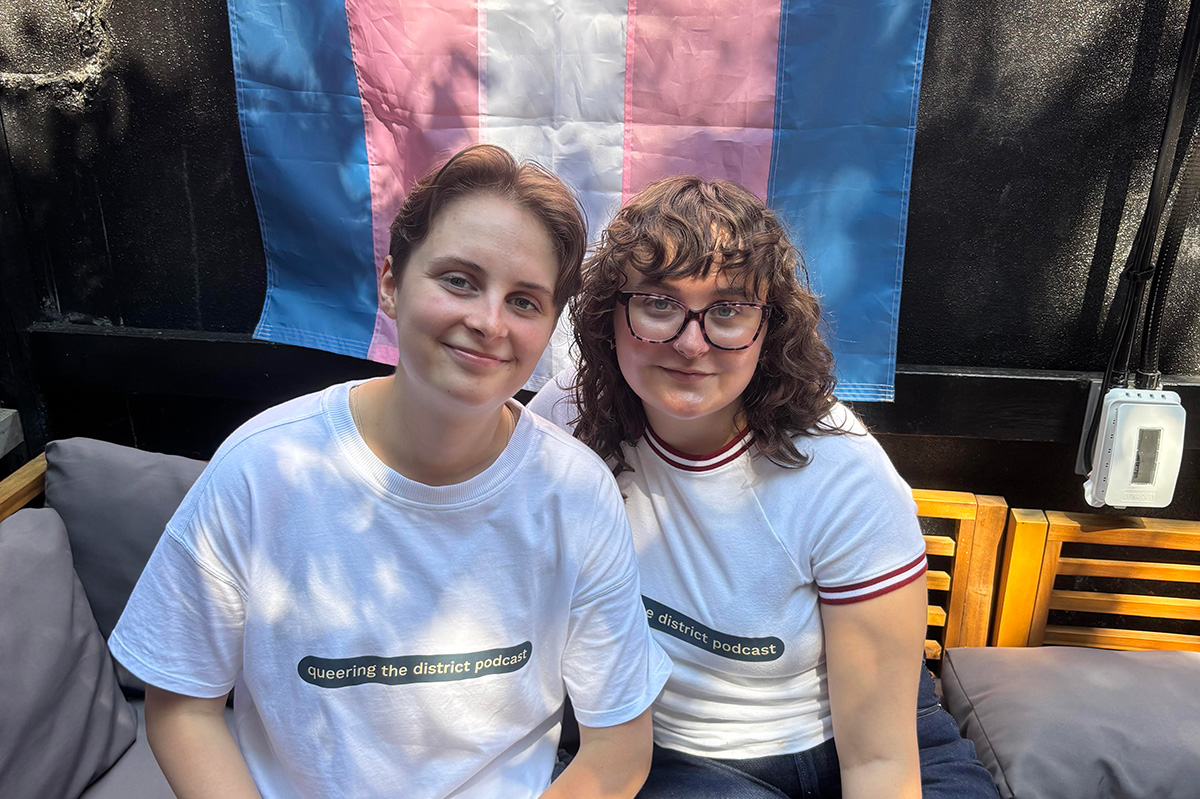
On June 25, as Pride month inched toward its end, three queer creators launched an ambitious project to honor the spaces that built D.C.’s LGBTQ community—and connect them to today’s queer life. The first episode of their podcast, Queering the District, hit streaming platforms that day, aiming to spotlight what host and co-creator Abby Stuckrath calls “third places”: bars, clubs, and gathering spots that have served as hubs for queer life across the city.
Each episode of the 10-part series delves into a different piece of D.C.’s queer past—from landmark clubs to untold personal stories—told through the voices of drag legends, activists, DJs, historians, and patrons who lived it. The show also threads together personal experiences from today’s community, bringing the listener on an auditory journey from Prohibition-era speakeasies to contemporary nights out at places like As You Are or Saints & Sinners.
Abby Stuckrath, alongside her sibling Ellie Stuckrath, and producer Mads Reagan, make up the podcast’s creative team. A recent journalism graduate of American University, Abby told the Blade that her passion for queer storytelling began during college—and that D.C. itself played a defining role in shaping her queer identity.
“I went to American University. I graduated last year and studied journalism. When I was in school, I always wanted to focus on queer stories – especially in D.C., because I’m from Denver, Colorado, I’ve never lived in a place like this before. D.C. has always just kind of been a place I call home when it comes to my queer identity.”
But breaking into the media to tell those stories wasn’t easy. Stuckrath quickly learned that editorial support—and funding—for queer-focused projects is limited. So she decided to do it her own way.
“I kind of found out that if you want to tell stories, you kind of have to do it on your own– especially when it comes to queer stories. There’s not a lot of people begging for us to talk about queer people and to pay you for it. So I was like, ‘Okay, let’s just do it on my own.’”
The idea for the podcast first took root in conversations with Ellie, Abby’s sibling and biggest supporter. Ellie had also moved to D.C. to find more space to explore and express their queer and gender identities. Together, the two began shaping a vision that would combine storytelling, sound design, and grassroots community input.
“I was like, ‘I don’t know what exactly I want to do yet, but I want it to be queer, and I want it to be about D.C., and it’s going to be called Queering the District, and we’re going to find out what that means.’ And Ellie is my biggest supporter, and my best friend. And they were like, ‘Hell yeah. Like, let’s do this.’ And so we decided to just do it together.”
The name stuck—and so did the mission. The team began researching queer D.C. history and found a city overflowing with stories that had rarely been documented, especially in mainstream archives.
“We started looking up the history of queer culture in D.C., and it kind of just clicked from there,” Stuckrath said. “I did not know anything about how rich our history is in the city until one Google search, and then I just kept learning more and more. I was kind of pissed because I studied gender studies in school in D.C. and didn’t learn shit about this.”
Season one focuses on the role of third places—non-work, non-home spaces where queer people could gather, exist fully, and build community.
“Third places have always been the epicenter of queer life… places outside of just your own personal home, because sometimes that isn’t a safe place. And of course, the work most commonly in the past and still today, isn’t a safe place for queer people to be full of themselves. So like, bars were the first place for queer people to really thrive and meet each other.”
To make the show participatory, Queering the District includes a twist: a voicemail line where anyone can call in and share a memory or question. The team calls the phone “Fifi”—a nod to the kind of retro guestbooks often used at weddings, but reimagined for queer nightlife and history.
“We wanted to find a way for people to share their stories with us anonymously… so even though we start in Prohibition, we wanted to connect it to now—like, those people who were singing jazz to each other in a white queer bar are connected to you singing karaoke on a Sunday night at your favorite gay bar. We’re all interconnected by this third place of queer bars in D.C.”
Those connections are emotional as well as historical. While building the series, one realization hit Stuckrath particularly hard: the immense loss of queer spaces in D.C., especially in neighborhoods that have since been heavily redeveloped.
“Every time I go to a Nats game, I think about, well, this just replaced five gay bars that used to be here. It used to be the home of Ziegfeld’s… Tracks, which was almost 2,000 square feet, with a volleyball court in the back, a fire pit, and iconic light show. I just didn’t know that we had that, and it made me sad for the queer elders that are in our city now who walk the streets and don’t see all those places they used to call home.”
That sense of loss—alongside the joy and resilience of queer community—is what the show aims to capture. As the podcast continues, Abby hopes it serves as both a celebration and an educational tool, especially for young LGBTQ people arriving in D.C. without realizing the queer foundations they’re walking on.
“D.C. is a unique city, and specifically young queer people who are hoping to move to the city—to know that you’ve got to know your history to be here. I hope this serves as an easier way for you to consume and learn about queer history, because queer history defines how we move in life.”
And for all the voices still left out, Abby is clear: this podcast is an open door, not a final word.
“This is a perfectly imperfect podcast. We should just be a starting point. We shouldn’t be the ending point.”
New episodes of Queering the District drop every Wednesday on all major platforms.
a&e features
Doug Spearman takes his chance
‘Noah’s Arc: The Movie’ debuted on Paramount+ last month
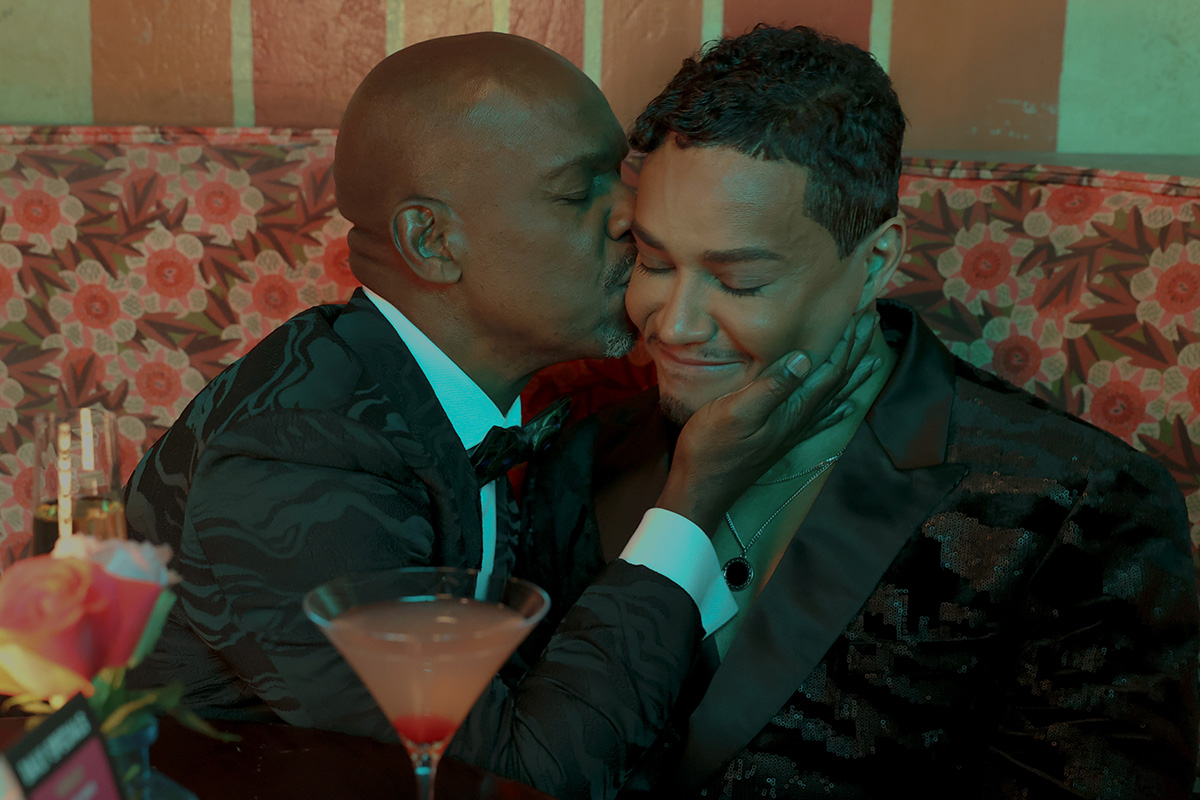
There’s no question that when Patrik-Ian Polk’s series “Noah’s Arc” premiered on Logo 20 years ago, it was a groundbreaking creation. The story of a group of Black gay men and their wonderful friendship. The titular arc was that of the cute main character, Noah (Darryl Stephens), and his close-knit circle of friends, including Chance played by gay actor Doug Spearman. This compelling and loving fraternity may, in fact, be what brought viewers back repeatedly, including a 2008 movie, “Noah’s Arc: Jumping the Broom,” as well as the 2020 “Noah’s Arc” short, and now, a new full-length feature “Noah’s Arc: The Movie,” debuting on Paramount+ on June 20. In the movie, filled with equal measures of laughs and tears, Chance, who has faced a devastating loss, finds his dependable friends there, ready to support and comfort him at a moment’s notice. I had the pleasure of speaking with Spearman the morning of the streaming premiere of “Noah’s Arc: The Movie.”
WASHINGTON BLADE: Doug, since the early 2000s, when the “Noah’s Arc” series premiered on Logo, you have been playing the character of Chance, including in the latest installment, “Noah’s Arc: The Movie.” What was it about Chance that appealed to you as an actor?
SPEARMAN: When Patrik (-Ian Polk) called me to ask me to play him (Chance), I was at JFK airport in the baggage claim, waiting for a suitcase. He explained what the part was. The thing that stuck out to me was the fact that Chance was in a long-term relationship with another Black man. And, they had a child; they had a 4-year-old daughter named Kenya. I had never seen two Black gay men raise a child on TV before. I thought it was the most revolutionary thing I’d ever seen. I immediately thought I’ve got to do this because that was something nobody had seen. I thought it was incredibly important to take the part.
BLADE: “Noah’s Arc: The Movie” was, once again, written and directed by Patrik-Ian Polk, who you just mentioned, is the creator of the entire franchise. What’s the secret to your long-standing working relationship?
SPEARMAN: [Laughs] the whole team, all of us, are like a band of brothers. We fight like brothers, we come together like brothers, we hash things out, we talk, because we’re all very different from our characters. I think the challenge of playing these guys and then uplifting these men, playing a part, especially something written by Patrik, is like solving a math equation. There’s always a challenge that’s enjoyable for me as an actor: to try to find out what it is that Patrik wants, and then how do I do it.
BLADE: I think you do a very good job of it.
SPEARMAN: Thank you very much
BLADE: In the years between “Jumping the Broom” and the new full-length movie, many changes have occurred, and the story addresses some of them, including gay widowhood, which is something that the aging community is now confronting, as well as mental health issues. Please say a few words about how you approached those subjects in the new movie.
SPEARMAN: I had a lot of loss in my life, right before we started shooting. Two months before we started shooting the first series, my mother died. I was going through the grief process through that whole first season. Since then, I’ve lost a lot of people in my life. In fact, when we started shooting the second season, the second week we were shooting, my ex died of a heart attack. I was having to fold that into what I was doing with my life on the set and off the set. You’ve got to show up and you’ve got to do your work. The first two seasons of “Noah’s Arc” are always tinged with the memory of grief. So, when I had to deal with the death that Chance faces (in the new movie), which is a significant death in his life, it wasn’t that hard to reach back, especially the scene in the graveyard. It was something that I unfortunately could pull from personal experience.
BLADE: Shifting gears, the movie features delightful cast surprises, including Jasmine Guy and TS Madison. Did you have a chance to interact with either or both when they were on set?
SPEARMAN: No, I didn’t have any scenes with Jasmine, and I missed her. I wish I had gotten to see her because I actually got to direct Jasmine for a CBS promo shoot for “Queen,” back in the early ‘90s. I had a huge crush on her when she was on “A Different World.” So, I really would have liked to reconnect. But TS and I got to see each other every day because I was in all her scenes. It was extraordinary being around somebody like that. That is one outspoken woman!
BLADE: Even though Beyoncé never makes an appearance in the movie, there’s a lot of talk about her. Would you say you are a Beyoncé fan?
SPEARMAN: Yes! I’m breathing! Yes, I’m a Beyoncé fan. I actually got the chance to meet her. I knew her mom. Her mom was extraordinary to me. She is in the second movie I directed. She also gave us a wedding gown to use in the very first scene of the movie. That family is extraordinarily important to me. Not only just to be a fan, but to be somebody who’s gotten to know them and work with them and see how hard they work. I don’t think anybody works as hard as Tina or Beyoncé.
BLADE: There was a recent news item about gay actor Benito Skinner of the Amazon Prime series “Overcompensating” being told not to bother auditioning for straight roles. As an out actor yourself, how important do you think it is for queer characters to be portrayed by queer actors, and vice versa?
SPEARMAN: Being queer is a multifaceted identity. There’s no one kind of queer person. I think finding the best actor that’s your first circle of casting. I think one of the joys about being an actor is that you get to play different parts. I play straight guys all the time. Dads and husbands and things like that. I think a lot of people are told not to do it. In fact, I wouldn’t be Chance if the actor who was originally cast as Chance hadn’t been pulled out of the series by his agents because they didn’t want him to play a gay character.
BLADE: That’s amazing! Thank you for sharing that. Without giving away too much, the ending of the movie is a little ambiguous, even ending with a question mark. If there was a “Noah’s Arc: The Movie” sequel, would you come back for that?
SPEARMAN: Yeah! A lot of it would depend on what Chance’s journey is going to be like. Patrik and I have conversations like that all the time. He’s very interested and supportive of input. I hope I would be, as we all would be, part of the creative growth with these characters. They live in Patrik’s head, and he writes them, but we’re the ones who have to flesh them out. It’s a conversation, it’s always a conversation.
BLADE: You are currently performing in Molière’s “The Imaginary Invalid” as part of the New Orleans Shakespeare Festival at Tulane. What has this experience been like for you?
SPEARMAN: It’s extraordinary! I started on stage when I was seven. There’s nothing like working with a live audience and having that immediacy. I’m working with an extraordinarily talented cast in a really great play, and I have some of the best scene partners I could ever want.
BLADE: Are there any upcoming film or TV projects you’d like to mention?
SPEARMAN: I’m still a writer, and I’m still a director, and I’ve still got scripts that I would like to make. I have a little something that’s a cross between “Treme” and “Bridgerton” that I want to do. I’m always trying to figure out what the next thing is.
a&e features
Visit Cambridge, a ‘beautiful secret’ on Maryland’s Eastern Shore
New organization promotes town’s welcoming vibe, LGBTQ inclusion
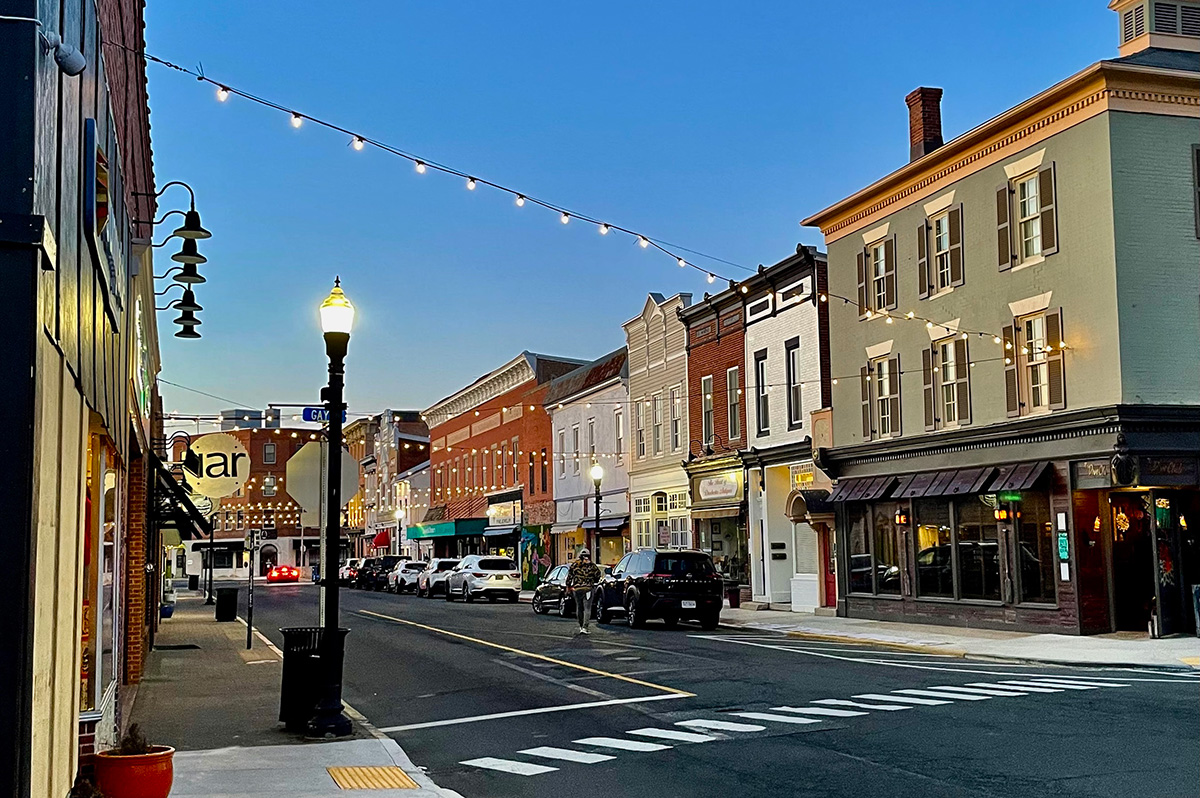
CAMBRIDGE, Md. — Driving through this scenic, historic town on Maryland’s Eastern Shore, you’ll be charmed by streets lined with unique shops, restaurants, and beautifully restored Victorian homes. You’ll also be struck by the number of LGBTQ Pride flags flying throughout the town.
The flags are a reassuring signal that everyone is welcome here, despite the town’s location in ruby red Dorchester County, which voted for Donald Trump over Kamala Harris by a lopsided margin. But don’t let that deter you from visiting. A new organization, Proudly Cambridge, is holding its debut Pride event this weekend, touting the town’s welcoming, inclusive culture.
“We stumbled on a beautiful secret and we wanted to help get the word out,” said James Lumalcuri of the effort to create Proudly Cambridge.
The organization celebrates diversity, enhances public spaces, and seeks to uplift all that Cambridge has to share, according to its mission statement, under the tagline “You Belong Here.”
The group has so far held informal movie nights and a picnic and garden party; the launch party is June 28 at the Cambridge Yacht Club, which will feature a Pride celebration and tea dance. The event’s 75 tickets sold out quickly and proceeds benefit DoCo Pride.
“Tickets went faster than we imagined and we’re bummed we can’t welcome everyone who wanted to come,” Lumalcuri said, adding that organizers plan to make “Cheers on the Choptank” an annual event with added capacity next year.
One of the group’s first projects was to distribute free Pride flags to anyone who requested one and the result is a visually striking display of a large number of flags flying all over town. Up next: Proudly Cambridge plans to roll out a program offering affirming businesses rainbow crab stickers to show their inclusiveness and LGBTQ support. The group also wants to engage with potential visitors and homebuyers.
“We want to spread the word outside of Cambridge — in D.C. and Baltimore — who don’t know about Cambridge,” Lumalcuri said. “We want them to come and know we are a safe haven. You can exist here and feel comfortable and supported by neighbors in a way that we didn’t anticipate when we moved here.”
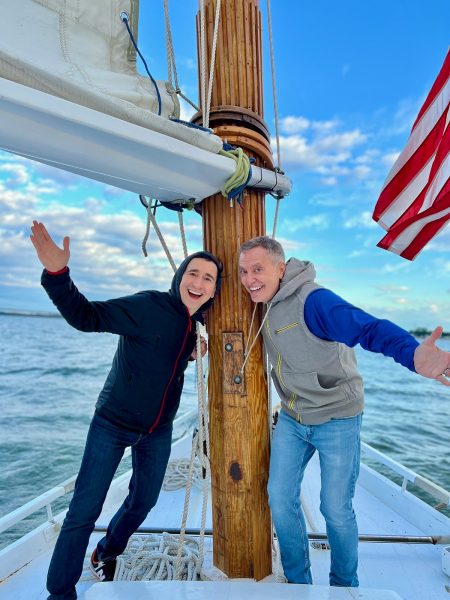
Lumalcuri, 53, a federal government employee, and his husband, Lou Cardenas, 62, a Realtor, purchased a Victorian house in Cambridge in 2021 and embarked on an extensive renovation. The couple also owns a home in Adams Morgan in D.C.
“We saw the opportunity here and wanted to share it with others,” Cardenas said. “There’s lots of housing inventory in the $300-400,000 range … we’re not here to gentrify people out of town because a lot of these homes are just empty and need to be fixed up and we’re happy to be a part of that.”
Lumalcuri was talking with friends one Sunday last year at the gazebo (affectionately known as the “gayzebo” by locals) at the Yacht Club and the idea for Proudly Cambridge was born. The founding board members are Lumalcuri, Corey van Vlymen, Brian Orjuela, Lauren Mross, and Caleb Holland. The group is currently working toward forming a 501(c)3.
“We need visibility and support for those who need it,” Mross said. “We started making lists of what we wanted to do and the five of us ran with it. We started meeting weekly and solidified what we wanted to do.”
Mross, 50, a brand strategist and web designer, moved to Cambridge from Atlanta with her wife three years ago. They knew they wanted to be near the water and farther north and began researching their options when they discovered Cambridge.
“I had not heard of Cambridge but the location seemed perfect,” she said. “I pointed on a map and said this is where we’re going to move.”
The couple packed up, bought a camper trailer and parked it in different campsites but kept coming back to Cambridge.
“I didn’t know how right it was until we moved here,” she said. “It’s the most welcoming place … there’s an energy vortex here – how did so many cool, progressive people end up in one place?”
Corey van Vlymen and his husband live in D.C. and were looking for a second home. They considered Lost River, W.Va., but decided they preferred to be on the water.
“We looked at a map on both sides of the bay and came to Cambridge on a Saturday and bought a house that day,” said van Vlymen, 39, a senior scientist at Booz Allen Hamilton. They’ve owned in Cambridge for two years.
They were drawn to Cambridge due to its location on the water, the affordable housing inventory, and its proximity to D.C.; it’s about an hour and 20 minutes away.
Now, through the work of Proudly Cambridge, they hope to highlight the town’s many attributes to residents and visitors alike.
“Something we all agree on is there’s a perception problem for Cambridge and a lack of awareness,” van Vlymen said. “If you tell someone you’re going to Cambridge, chances are they think, ‘England or Massachusetts?’”
He cited the affordability and the opportunity to save older, historic homes as a big draw for buyers.
“It’s all about celebrating all the things that make Cambridge great,” Mross added. “Our monthly social events are joyful and celebratory.” A recent game night drew about 70 people.
She noted that the goal is not to gentrify the town and push longtime residents out, but to uplift all the people who are already there while welcoming new visitors and future residents.
They also noted that Proudly Cambridge does not seek to supplant existing Pride-focused organizations. Dorchester County Pride organizes countywide Pride events and Delmarva Pride was held in nearby Easton two weeks ago.
“We celebrate all diversity but are gay powered and gay led,” Mross noted.
To learn more about Proudly Cambridge, visit the group on Facebook and Instagram.
What to see and do
Cambridge, located 13 miles up the Choptank River from the Chesapeake Bay, has a population of roughly 15,000. It was settled in 1684 and named for the English university town in 1686. It is home to the Harriet Tubman Museum, mural, and monument. Its proximity to the Blackwater National Wildlife Refuge makes it a popular stop for birders, drawn to more than 27,000 acres of marshland dubbed “the Everglades of the north.”
The refuge is walkable, bikeable, and driveable, making it an accessible attraction for all. There are kayaking and biking tours through Blackwater Adventures (blackwateradventuresmd.com).
Back in town, take a stroll along the water and through historic downtown and admire the architecture. Take in the striking Harriet Tubman mural (424 Race St.). Shop in the many local boutiques, and don’t miss the gay-owned Shorelife Home and Gifts (421 Race St.), filled with stylish coastal décor items.
Stop for breakfast or lunch at Black Water Bakery (429 Race St.), which offers a full compliment of coffee drinks along with a build-your-own mimosa bar and a full menu of creative cocktails.
The Cambridge Yacht Club (1 Mill St.) is always bustling but you need to be a member to get in. Snapper’s on the water is temporarily closed for renovations. RaR Brewing (rarbrewing.com) is popular for craft beers served in an 80-year-old former pool hall and bowling alley. The menu offers burgers, wings, and other bar fare.
For dinner or wine, don’t miss the fantastic Vintage 414 (414 Race St.), which offers lunch, dinner, wine tasting events, specialty foods, and a large selection of wines. The homemade cheddar crackers, inventive flatbreads, and creative desserts (citrus olive oil cake, carrot cake trifle) were a hit on a recent visit.
Also nearby is Ava’s (305 High St.), a regional chain offering outstanding Italian dishes, pizzas, and more.
For something off the beaten path, visit Emily’s Produce (22143 Church Creek Rd.) for its nursery, produce, and prepared meals.
“Ten minutes into the sticks there’s a place called Emily’s Produce, where you can pay $5 and walk through a field and pick sunflowers, blueberries, you can feed the goats … and they have great food,” van Vlymen said.
As for accommodations, there’s the Hyatt Regency Chesapeake Bay (100 Heron Blvd. at Route 50), a resort complex with golf course, spa, and marina. Otherwise, check out Airbnb and VRBO for short-term rentals closer to downtown.
Its proximity to D.C. and Baltimore makes Cambridge an ideal weekend getaway. The large LGBTQ population is welcoming and they are happy to talk up their town and show you around.
“There’s a closeness among the neighbors that I wasn’t feeling in D.C.,” Lumalcuri said. “We look after each other.”
-
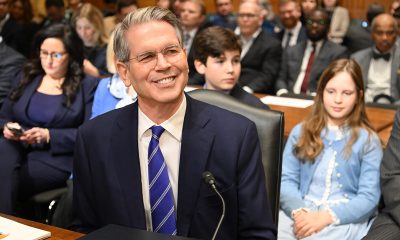
 Federal Government2 days ago
Federal Government2 days agoTreasury Department has a gay secretary but LGBTQ staff are under siege
-
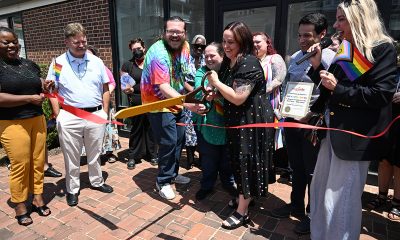
 Virginia3 days ago
Virginia3 days agoDefying trends, new LGBTQ center opens in rural Winchester, Va.
-

 District of Columbia2 days ago
District of Columbia2 days agoGay GOP group hosts Ernst, 3 House members — all of whom oppose Equality Act
-

 Opinions4 days ago
Opinions4 days agoUSAID’s demise: America’s global betrayal of trust with LGBTQ people



